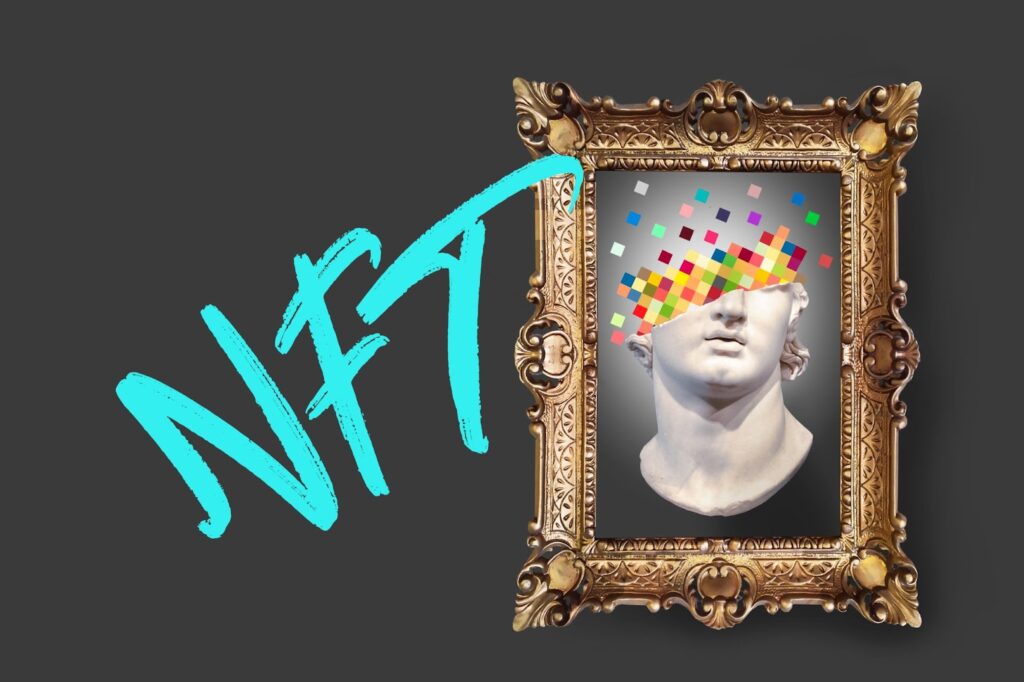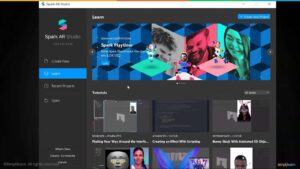If you happen to be an artist or designer, and you’ve come across the news that someone recently acquired digital artwork by Beeple for a staggering sum of 69 million dollars, it’s natural for you to feel an unparalleled rush of excitement. Unless, of course, you happen to have some close ties with the Singaporean business entity responsible for the purchase. Nevertheless, there’s still an opportunity for you to venture into the world of NFTs (Non-Fungible Tokens) and claim a digital creation as your very own.
In many cases, embarking on this NFT journey may entail a financial risk, and you might find yourself parting with some of your hard-earned money. However, it also presents a chance for you to join the rapidly growing trend and proudly showcase your digital assets on popular social platforms like Instagram and Twitter, eliciting admiration and envy from your friends and followers alike.
Choose your item
Embarking on the journey of NFT (Non-Fungible Token) creation begins with the pivotal step of choosing a digital asset. This asset forms the cornerstone of your NFT and can span a wide array of digital formats. Here are key considerations and types of digital assets one can use:
Diverse Media Types:
- Visual Art: This includes paintings, digital illustrations, and graphic designs. When selecting visual art, consider its uniqueness and appeal;
- Literary Works: Textual content like poems, short stories, or essays can also be tokenized. The originality and literary value are crucial here;
- Music Tracks: Original compositions or unique musical pieces can be a great choice. Ensure the music evokes emotion and connection;
- Videos: Short films, animations, or even personal vlogs can be transformed into NFTs. The key is to have captivating content that stands out.
Transforming into Unique Artifacts:
NFTs revolutionize the concept of digital ownership by turning these digital assets into one-of-a-kind artifacts. This transformation ensures that while the digital file can be copied, the ownership and originality of the NFT remain exclusive and verifiable.
- Considerations for Selection:
- Originality: Choose something uniquely yours or for which you have the rights;
- Audience Appeal: Consider what might resonate with potential buyers or collectors;
- Quality: High-quality content stands out in the crowded NFT marketplace;
- Story Behind the Asset: Sometimes, the story or inspiration behind the creation can add immense value.
- Tips for Success:
- Research Trends: Look at what’s popular in the NFT space to gauge market interest;
- Protect Your Rights: Ensure you have the legal rights to the content you’re tokenizing;
- Engage with Communities: Join NFT forums or social media groups to understand what collectors are looking for;
- Marketing: Develop a strategy to promote your NFT to reach the right audience.
By meticulously selecting and preparing your digital content, you set the foundation for a successful entry into the fascinating world of NFTs, where art meets technology to create a new paradigm of digital ownership and value.
Keep some Ether available
Creating NFTs is an exciting venture, but before you dive in, you’ll need to ensure you have the essential cryptocurrency, Ether (ETH), on hand. Ethereum, the blockchain of choice for many NFT enthusiasts, is renowned for its robust ecosystem and widespread adoption. In this section, we’ll explore how to keep some Ether available for your NFT endeavors and why it’s crucial.
Why Ether and Ethereum?
Ethereum stands out as the preferred blockchain for NFT creation due to its prominence in the NFT market. Some of the most famous NFT platforms, such as OpenSea and Rarible, are built on Ethereum. Moreover, Ethereum’s smart contract capabilities make it an ideal choice for minting and trading NFTs.
Getting Started with Ether
- Choose a Wallet: To begin your NFT journey, you’ll need an Ethereum wallet that supports Ether. Among the many options available, “MetaMask” is a user-friendly choice. It’s compatible with both iPhones and Android smartphones and can be downloaded for free;
- Minimum Ether Requirements: Minting an NFT can incur costs, known as “gas fees,” which fluctuate based on network demand. To ensure a smooth experience, it’s advisable to have at least $100 worth of Ether in your wallet. This amount can cover the cost of minting and any additional fees that may arise during the process;
- Be Prepared for Fluctuations: Ether’s value is known to be volatile. Keep an eye on its price trends, as the cost of minting NFTs can vary significantly based on market conditions. Being aware of these fluctuations will help you plan your NFT creation budget more effectively;
- Consider Long-term Holding: If you anticipate creating multiple NFTs or participating in the NFT market regularly, it’s wise to consider holding a portion of your Ether for the long term. This strategy can help you capitalize on potential price increases and ensure you always have enough Ether for your NFT activities.
Creating an OpenSea Account
If you’re planning to mint and sell your NFTs on OpenSea, there’s an additional step. OpenSea requires you to connect your wallet to establish an account. This process is not associated with a direct cost, but it’s essential for managing your NFTs and engaging with the OpenSea community.
Select a Market
Setting up your journey into the world of Non-Fungible Tokens (NFTs) is an exciting venture, but before you can start minting your unique digital assets, you’ll need to select the perfect online marketplace. The marketplace you choose will significantly impact your success as an NFT creator or seller. Let’s delve into the details and explore some top options:
1. Mintable – Where Creativity Knows No Bounds
Mintable is a reputable NFT marketplace known for its user-friendly interface and flexibility. Here’s why you might consider it:
- User-Friendly: Mintable offers an intuitive platform that simplifies the NFT creation process, making it ideal for newcomers;
- Flexibility: You have the freedom to mint various types of NFTs, from digital art to collectibles and more;
- Community: Engage with a thriving community of creators and collectors to gain exposure and build your brand.
2. Rarible – Empowering Digital Artists
Rarible is another popular NFT marketplace that appeals to digital artists and creators. Here’s what it has to offer:
- Creator-Focused: Rarible provides a platform where artists can showcase their digital masterpieces and earn royalties through resales;
- DAO Governance: Participate in the platform’s governance decisions and shape the future of Rarible;
- NFT Farming: Get involved in NFT farming and yield farming opportunities to maximize your earnings.
3. OpenSea – Unleash Your Creativity with No Boundaries
In this guide, we’ll focus on OpenSea, a well-established and inclusive NFT marketplace that’s free to join and open to all content creators. While it might be true that the platform hosts a variety of digital products, including some less popular items, it also offers numerous benefits:
- Accessibility: OpenSea welcomes creators from all backgrounds, whether you’re an established artist or just starting;
- Zero Listing Restrictions: Unlike some platforms, OpenSea doesn’t impose restrictions on the type of content you can list, allowing you to experiment and diversify;
- Community Engagement: Tap into the vast OpenSea community to gain exposure and potential buyers for your NFTs.
Navigating OpenSea: Linking Your ETH Wallet
Once you’ve chosen OpenSea as your marketplace of choice, it’s time to link your Ethereum (ETH) wallet for seamless transactions. Here’s a step-by-step guide:
- Access Your Profile: Start by clicking on your user icon within OpenSea, and select “My Profile.”;
- Connecting Your ETH Wallet: OpenSea offers various options for linking your ETH wallet, with MetaMask being a popular choice. To connect, follow these steps;
- Choose “Use another Wallet” from the options;
- Click on “WalletConnect.”;
- Follow the on-screen prompts provided by OpenSea;
- Verify the Wallet Connect operation using your MetaMask application.
By linking your wallet, you’re ready to mint, buy, and sell NFTs on OpenSea securely.
Create the NFT
- Initial Connection: Begin by integrating your Ethereum Wallet with the OpenSea platform. This is a crucial step in ensuring a secure and seamless experience;
- Creating an Account: Navigate to the “Create” option located in the upper menu of OpenSea. Here, you will establish your account by providing the necessary details. Ensure the accuracy of this information before proceeding.

Minting Your NFT
- Beginning the Minting Process: With your account set up, embark on the minting journey of your unique NFT;
- Uploading Artwork and Details: Click on “New Item” to upload your digital artwork. This stage is vital as it involves detailing your creation. Include comprehensive information about your NFT to captivate potential buyers.
Finalizing and Launching
- Initiating Your NFT Creation: Once you’re satisfied with the details and ready to proceed, click “Create” to finalize your NFT;
- Selling Your NFT on OpenSea
Listing Your NFT for Sale
- Accessing Your Minted NFT: Locate your newly minted NFT in your collection. This is where you transition from creator to seller;
- Initiating the Sale: Select the “Sell” button to begin the listing process.
Setting Sale Parameters
- Choosing Payment Options: You’ll have the flexibility to select Ethereum tokens as your preferred payment method. This choice is crucial for aligning with your financial goals and market trends;
- Determining Pricing Strategy: Decide whether you’ll set a fixed price or opt for an auction format. Each has its advantages, and your choice should align with your sales strategy;
- Profit Allocation: Plan how you’ll distribute profits from initial and subsequent sales. This foresight can aid in long-term financial planning and sustainability.
Key Tips for Success
- Quality Artwork: Ensure your digital artwork is unique and high-quality to attract buyers;
- Descriptive Information: Provide detailed, engaging descriptions to make your NFT stand out;
- Market Research: Understand current market trends to price your NFT competitively;
- Promotion: Utilize social media and online communities to promote your NFT.
By following these steps and incorporating these tips, you can successfully create and sell your NFT on OpenSea, tapping into the burgeoning digital art market.
Earn
Creating an NFT is just the first step in the digital art journey. Once it’s listed on OpenSea, the real challenge begins – attracting buyers and making your NFT stand out. Here’s how to turn your digital creation into a success story:
- Build a Strong Online Presence: Establish yourself on social media platforms relevant to NFT collectors and enthusiasts. Share your creation process, inspirations, and the story behind your NFT. This builds a connection with potential buyers;
- Leverage NFT Communities: Engage with NFT communities on platforms like Discord, Reddit, and Twitter. Participate in discussions, offer insights, and subtly introduce your NFT to these groups;
- Collaborate with Influencers: Partner with influencers in the NFT space to showcase your work. They can provide a much-needed push to get your NFT noticed by a broader audience;
- Utilize Paid Advertising: Invest in targeted ads on social media and NFT-related websites. This can help in reaching out to potential buyers outside your network;
- Offer Limited Editions: Create a sense of urgency and exclusivity by offering limited editions or special versions of your NFT. This can attract collectors who value rare items;
- Provide Authenticity and Transparency: Share detailed information about your NFT, including its creation process, utility (if any), and your artistic background. Authenticity can significantly boost buyer confidence;
- Host Virtual Events: Organize online events or webinars to showcase your NFT and interact with potential buyers. This personal touch can differentiate your NFT in a crowded market;
- Stay Updated with Trends: Keep an eye on the latest trends in the NFT world. Adapting to these trends can increase the relevance and appeal of your NFT.
Capitalizing on Viral Fame
If your NFT is based on a meme or a viral internet phenomenon, here’s how to leverage that fame:
- Embrace the Narrative: Acknowledge the story behind your NFT, especially if it’s based on a popular meme or a viral moment. This adds a layer of interest and relatability;
- Connect with the Community: Engage with the online community that follows the meme or phenomenon. Their enthusiasm can be a significant driving force for sales;
- Narrate Your Journey: Share your experience of how the meme or phenomenon impacted your life. A personal story can be compelling and create a unique selling proposition for your NFT;
- Offer Variants: Considering the meme’s popularity, create variants of your NFT. This can cater to different preferences and price points, expanding your buyer base;
- Collaborate with Other Artists: Partner with artists who have created related viral content. This can lead to cross-promotion and access to a larger audience.
By implementing these strategies, you can effectively promote your NFT on OpenSea and beyond, turning your digital artwork into a desirable asset for collectors.
Conclusion
In conclusion, the world of digital art and NFTs offers an exciting but potentially challenging path for artists and designers. While reaching the same level of success as those who have sold multimillion-dollar pieces may seem daunting, it’s a journey worth considering. Despite the financial risks involved, the opportunity to create and own unique digital assets can be a rewarding endeavor. So, take the plunge, embrace the NFT wave, and share your creations proudly with the world on platforms like Instagram and Twitter, for you never know where this journey may lead you in the ever-evolving landscape of digital art and innovation.


Average Rating